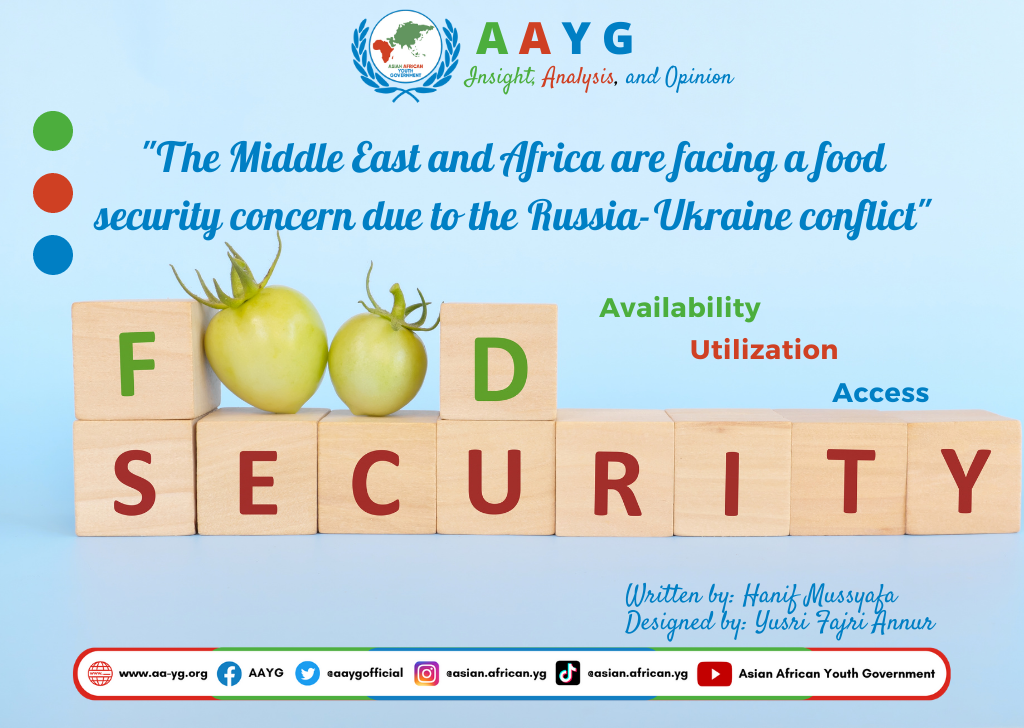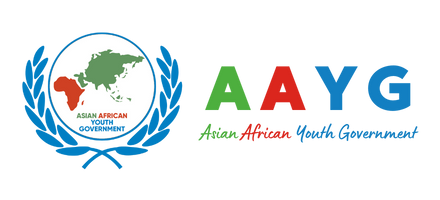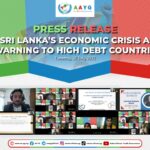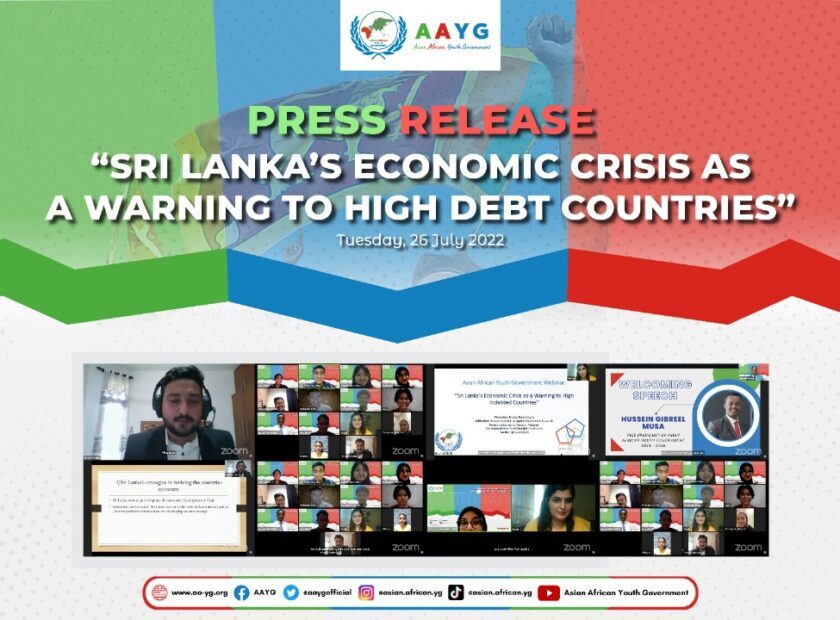
The Middle East and Africa are Facing a Food Security Concern Due to The Russia-Ukraine Conflict
The conflict between Russia and Ukraine had a global impact on various issues. Food security is one of the most concerning topics.
Food security is a concern because Russia and Ukraine are major food supplier countries. Many countries depend heavily on food imports, especially in the Middle East and Africa.
The Impact of War
According to World Bank data, before the Covid-19 outbreak, 55 million people out of 456 million in the region were malnourished in 2020 (World Bank, 2020).
Additionally, the World Bank estimates that by 2020, MENA will be responsible for 20% of the world’s population facing an extreme food crisis. According to IMF statistics, inflation is It is expected to reach 14.8% in the MENA region in 2021 (IMF, 2021). Based on UN estimates, food costs in April 2022 will be 34% higher than last year (UN, 2022).
Because they rely heavily on imports, countries in the Middle East and North Africa frequently struggle to achieve food security. Wheat and whole grains are the primary food sources for people in the MENA region.
Russia and Ukraine are food commodity suppliers to MENA countries besides the United States and France. The MENA region mainly relies on Russia and Ukraine to import wheat, flour, barley, sunflower oil, seeds, and fertilizers.
Before the conflict, the Black Sea transported over 95 percent of Ukraine’s total grain and corn exports, over half of which went to MENA nations. The vital route is currently closed, limiting Ukrainian maritime traffic, following a Russian military attack on its port. In other words, continuous violence affects the supply chain of grains and vegetable oils, increases food prices, and is likely to increase domestic agricultural production costs significantly.
The problem of import dependence in MENA countries cannot be separated from their incapacity to produce food ingredients. This is due to the soil, weather, and climate conditions, which do not support some agricultural and plantation cultivation. In addition, one of the reasons is population growth, which has reduced arable land availability per capita to 0.19 hectares, one of the lowest in the world. Although agricultural production increased over the last decade, cereal yields in the MENA region averaged around 1.9 tonnes per hectare, well below the global average of 3.7 tonnes per hectare.
The path of solutions
MENA countries adopt a variety of initiatives and policies to deal with the issues. On February 25, Lebanon’s economy minister stated that the country had only enough grain stocks for one month.
The economy minister announced that the government would purchase an additional month’s supply of wheat, opening the door for private importers for the first time in decades. Currently, the Central Bank subsidizes private importers’ wheat purchases at the cost of US$20 million per month to reduce the price of bread to consumers.
On March 5, the Ministry of Industry said that Lebanon would begin limiting wheat, allowing it to be used only for bread until alternate sources of supply could be found. The government wants to buy wheat from Canada, Australia, and the United States.
In Egypt, Prime Minister Mostafa Madbouly declared in a Cabinet meeting on February 23 that Egypt’s current grain supply is sufficient for the next four months. In addition, local produce will be harvested in mid-April, extending the stock to around 9 months. The government then issued a three-month ban on wheat, flour, and other staple exports on March 10.
Countries such as India, China, and the United States could be one option to replace Russia and Ukraine as wheat and grain importers. However, when the economy breaks down, import prices from these countries will automatically increase significantly. In addition to attempting to substitute importing countries, governments in the MENA region are attempting to seek aid from international organizations or institutions such as the IMF, World Bank, and WFP, either in the form of food assistance or financial assistance.
Spirit of Asia-Africa
As a large and diverse alliance of countries, Asia-Africa must share common ambitions to solve this problem. As the G20 Presidency, Indonesia is taking strategic steps. The G20 aims to reduce tensions and have a broader impact, particularly on developing countries, with the theme “Recover Together, Recover Stronger.”
In addition to the G20 permanent members, Indonesia invited several Asian and African organizations and countries, including the African Union, the African Union Development Agency-NEPAD (AU-NEPAD), the Association of Southeast Asian Nations (ASEAN), Pacific Island Forum (PIF), Singapore, and the United Arab Emirates. Ukraine was also invited as part of a genuine effort to achieve peace. Furthermore, To maintain the unity of the G20, Indonesia still hopes that Russia, America, and the European Union will attend the summit forum in Bali (MoFA Indonesia, 2021).
The invitation of the African Union to become a new history for the G20 meeting, for the first time, African representatives of more than 1.3 billion people were presented to solve global problems (Said, 2021).
Connie Rahakundini Bakrie, a defense and military researcher, stated in a discussion on medcom.id that President Joko Widodo’s visit had a positive impact on world food market prices by lowering commodity prices. This effort must continue to be inclusive, particularly during Indonesia’s G20 presidency (Medcom.id, 2022).
Reporting from BBC News Indonesia, an international relations observer from Padjadjaran University, Teuku Rezasyah, considers that Jokowi’s arrival to Ukraine and Russia brings new ideas in realizing peace, Indonesia is trying to eliminate the stigma of “Russia is the part of the problem” to “Russia is the part of the solution.”(BBC Indonesia, 2022)
If this mission continues to be successful, Indonesia will have fulfilled the spirit of the Asia-Africa Summit by remaining neutral and encouraging protracted world peace
Writer : Hanif Musyaffa (@hmusyaffa_) – Writer AAYG Internship 1.0
Designer : Yusri Fajri Annur (@yusrifajriannur17) – Designer AAYG Internship 1.0





